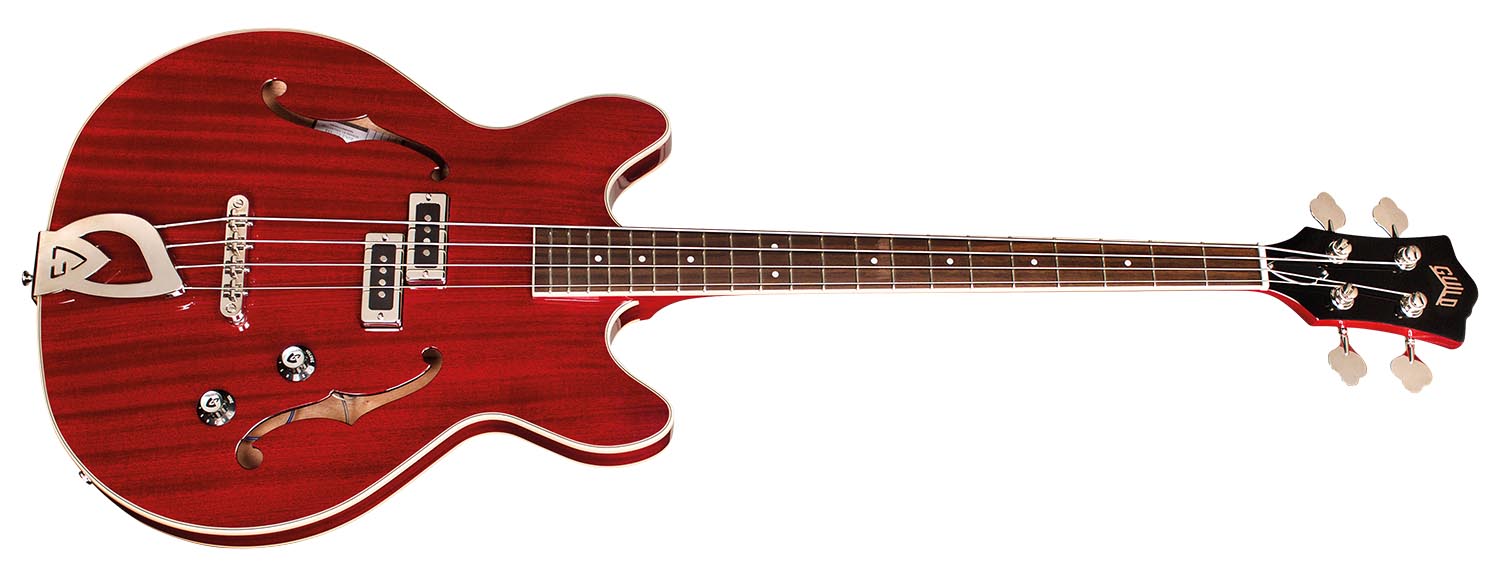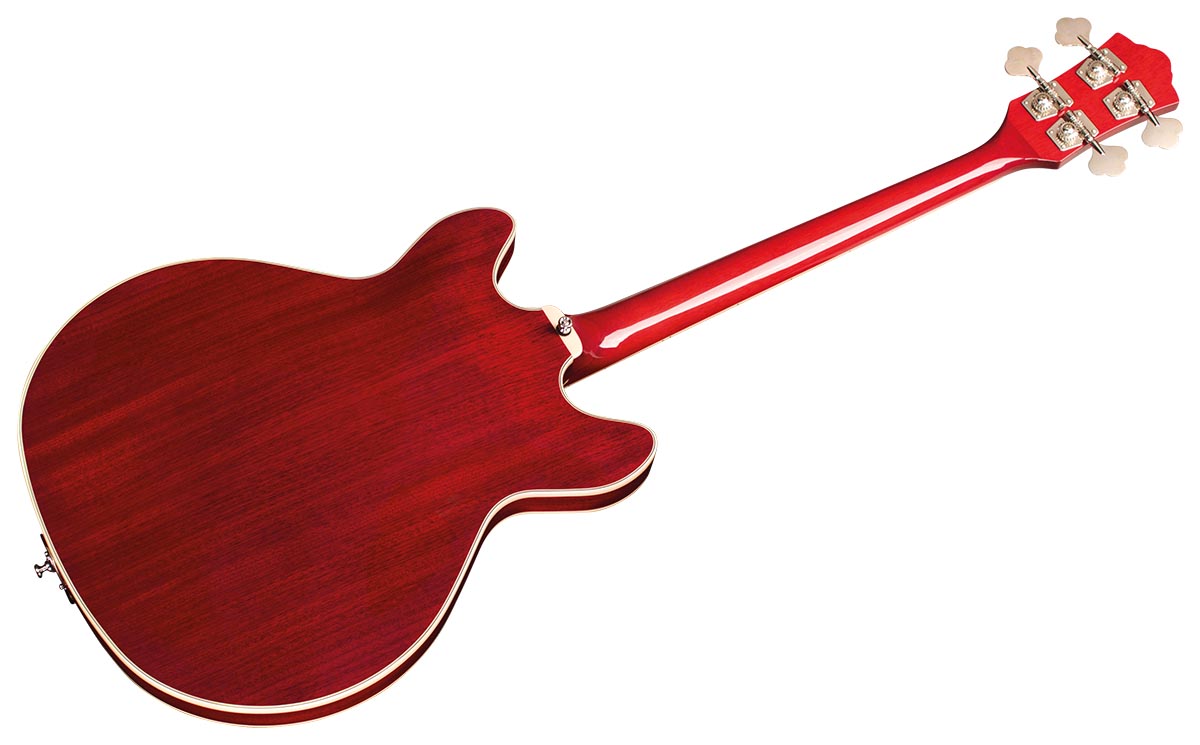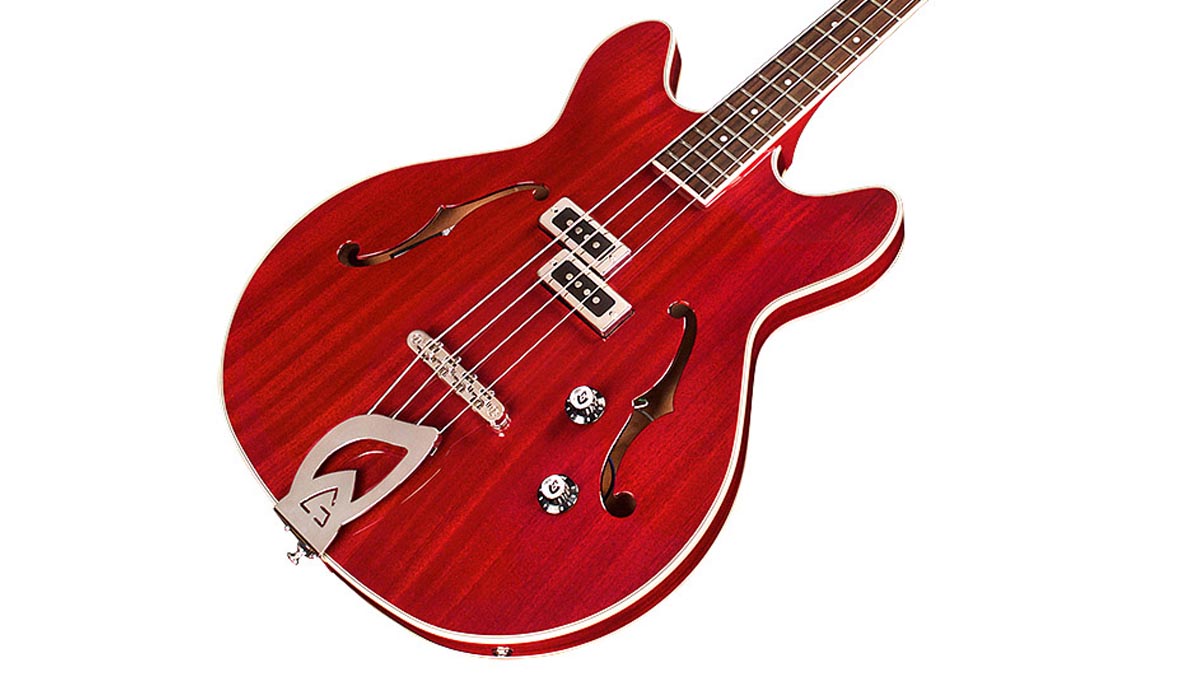Guitar World Verdict
A great addition to the Guild bass range.
Pros
- +
Gorgeous looks.
- +
Playable.
- +
Decent tone set.
Cons
- -
None.
You can trust Guitar World
The Starfire bass guitar is the latest offering from Guild, and is a member of the company’s Newark St. Collection. This series marks the return of several of Guild’s guitars and basses from the '60s, with each instrument serving as a modern adaptation of the original, yet at an affordable price.
Starfire basses were popular with many rock and pop groups during the '60s, with bassists such as Jack Casady of Jefferson Airplane and Phil Lesh of the Grateful Dead two notable low-enders who put them to use. We were sent the hollow-bodied Starfire I bass to put through its paces.
Build Quality
The Starfire I features the company’s traditional body shaping, but with a slimmed down body thickness which measures just 2.4”. The smooth finish on the arched maple body is perfectly complemented by the nickel pickup casings, nickel Tune-O-Matic bridge and harp tailpiece, the latter feature nicely harking back to the classic Guild aesthetic of old.
Logo-adorned black top hat controls are the perfect choice for this classic instrument. The inward-shifted mahogany neck sports the same vintage walnut finish as the body, with the ivory cream binding contrasting beautifully with the darker wood coloring.

The build quality is excellent across the instrument: the gloss polyurethane finish is of a high standard, the edge binding has been perfectly applied, and the fretwork is excellent. The instrument arrived ready to play, strung with D’Addario 45s and with the factory-set action sensibly set to appeal to the majority of users.
The Starfire sports Guild’s own BC-1 BiCoil pickups, which come with hum-resistant nickel pickup casings and Alnico 5 magnet construction. The intention here is that these pickups complement the naturally wood sound of the hollow body construction, allowing warm, rounded vintage tones, and more modern sounds, too.
Sounds and Playability
Despite its large body, the instrument sits comfortably on the lap, and exhibits no neck dive whatsoever, thanks to the short 30.75” scale length. Results are equally good when standing, with the instrument no hardship at all to play on stage thanks to its low weight and excellent balance. We found the neck to be nicely responsive thanks to its slim profile, with the shorter scale also making the instrument easy to navigate across the fingerboard.
The Starfire I has a simple control set, comprising only a master volume and a single tone control. However, the volume knob also has a push-pull functionality which, according to Guild, operates as a ‘vintage switch’, rolling down the low frequencies and resulting in a tone which purports to be reminiscent of the parallel pickup configuration found on vintage hollow-body basses.
Plugging in and initially playing with the tone control on full, the Starfire offers a tone that is naturally warm with a surprisingly uncluttered low end. This meant that vintage tones are well-served, with the instrument begging to be used for soul and Motown-style grooves.
Rolling off the tone control darkens the sound nicely, but at all times we find the instrument’s fundamental sound to have a pleasing punch in the lower midrange, largely a reflection of the hollow-body construction. Using a pick emphasizes this nicely, allowing the bass to comfortably cater for classic rock tones.
Activating the vintage switch works as advertised, rolling off some low end and allowing for a significantly brighter tone than we expected. When combined with judicious use of the tone control, this makes a biting pick tone possible, while also offering a moderately more modern-sounding fingerstyle sound.
That said, the Starfire retains the aforementioned midrange punch throughout, meaning that it won’t suit all styles of playing, or all genres. Given that the visual aesthetic of the instrument suggests it would be most at home in pop and rock contexts, we found the overall palette to be appropriate.

Conclusion
There’s no doubt that Guild have crafted an appealing instrument with the new Starfire I. With a look that’s certain to appeal to vintage rockers as well as a younger audience, the instrument has an impressive range of tonal options considering its single pickup, and boasts a high level of build quality.
With its short scale length and comfortable weight, this is a bass that will hold a lot of appeal for young bassists who are new to the instrument – and at this price point, it seems likely that Guild will be introducing a classic design to a new generation.
Specs
- PRICE: $835 MSRP
- MADE IN: Indonesia
- BODY: Maple with ivory binding
- NECK: Mahogany
- NECK JOIN: Set neck
- FRETBOARD: Indian rosewood, 21 frets
- PICKUP: Guild BC-1 BiCoil
- CONTROLS: Volume with push/pull Vintage Switch, tone
- HARDWARE: Guild tuners, Guild Tune-o-Matic bridge
- LEFT-HAND OPTION AVAILABLE: Yes
- CASE/GIG-BAG INCLUDED: No
- CONTACT: Guild
“Affordable versions of the three best basses I've ever held in my hands”: Sterling by Music Man completes its trilogy of Joe Dart signature models with a trio of made-to-order basses that cost less than $500
“The ace up the sleeve of bass players around the globe since 1978”: Tobias instruments were trailblazers in the bass world. Now they’re back as part of the Gibson family










